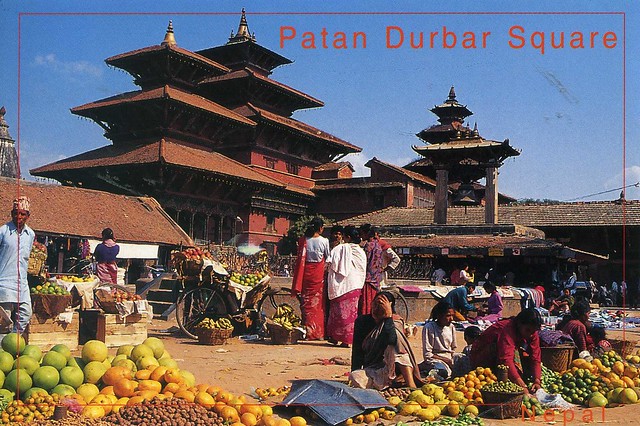NP-346
Patan Durbar Square is situated at the centre of Lalitpur city. It is one of the three Durbar Squares in the Kathmandu Valley, all of which are UNESCO World Heritage Sites. One of its attraction is The Ancient Royal Palace where Malla Kings of Lalitpur resided.
Lalitpur (officially Lalitpur Sub-Metropolitan City, also called Patan) is one of the major cities of Nepal located in the south-central part of Kathmandu Valley. Patan is also known as Manigal. It is best known for its rich cultural heritage, particularly its tradition of arts and crafts. It is also called as city of festival and feast, fine ancient art, making of metallic and stone carving statue. At the time of the 2001 Nepal census it had a population of 162,991 in 68,922 individual households.
Nepal is a landlocked sovereign state located in South Asia. It has an area of 147,181 square kilometres and a population of approximately 27 million (and 2 million absentee workers living abroad). It is located in the Himalayas and bordered to the north by the People's Republic of China, and to the south, east, and west by the Republic of India, while across the Himalayas lies the Tibetan Autonomous Region. Kathmandu is the nation's capital and the country's largest metropolis. Kathmandu Valley itself has estimated population of 5 million.
Nepal has a rich geography. The mountainous north has eight of the world's ten tallest mountains, including the highest point on Earth, Mount Everest, called Sagarmatha in Nepali. It contains more than 240 peaks over 6,096 m above sea level. The fertile and humid south is heavily urbanized.
Hinduism is practised by about 81% of Nepalese - making it the country with the highest percentage of Hindu followers. Buddhism, though a minority faith in the country, is linked historically with Nepal.
A monarchy throughout most of its history, Nepal was ruled by the Shah dynasty of kings from 1768, when Prithvi Narayan Shah unified its many small kingdoms. However, a decade-long Civil War by the Communist Party of Nepal (Maoist) and several weeks of mass protests by all major political parties led to the 12 point agreement of November 22, 2005. The ensuing elections for the constituent assembly on May 28, 2008 overwhelmingly favored the abdication of the Nepali monarch Gyanendra Shah and the establishment of a federal multiparty representative democratic republic.





 Maroon
Maroon 










































































































































































1 comment:
I love your blog! great idea:)
Post a Comment